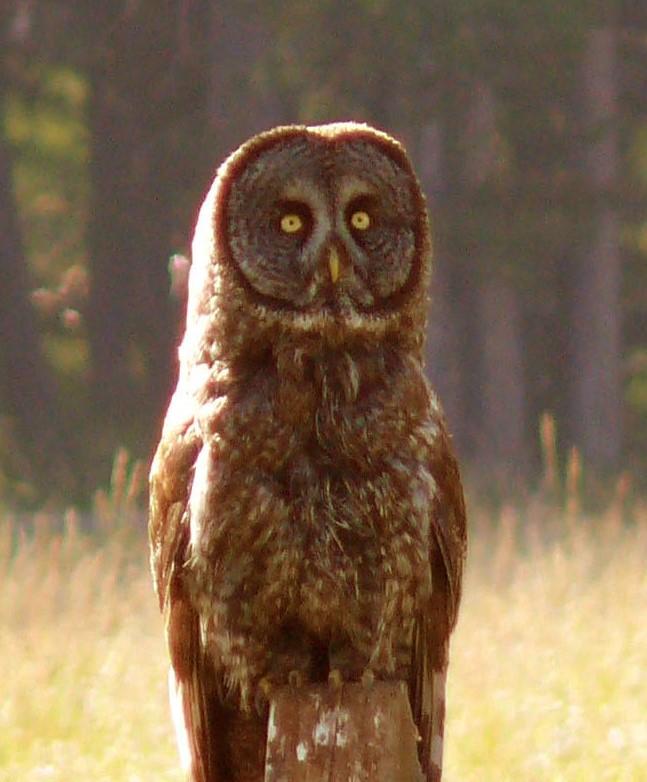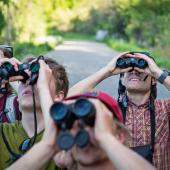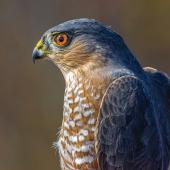Great Grey Ghost
Montana's wisest bird of prey.
The huge bird swoops in low through a stand of spruce trees, moving in ghostly silence among them. Despite a wingspan of almost five feet, it maneuvers gracefully and comes to rest in a snag, perching close to the trunk. Now motionless, the great grey owl is perfectly camouflaged. If you hadn’t seen it land, this grey and brown raptor would be almost impossible to spot.
The last light is fading on a winter afternoon in the Gallatins, but the thrill of sighting North America’s largest owl stays with you. The great grey is a southwest Montana native and supremely well-adapted predator. Equipped with powerful talons, nearly silent flight, and astonishingly acute hearing, this raptor hunts primarily by sound. Its disc-shaped face, or ruff, focuses sounds, and asymmetrical ear openings help pinpoint the location of prey.
Great grey owls can detect rodents under snow as much as two feet deep—and they are one of the few raptors known to plunge head first into snow to catch a meal. You may remember dissecting regurgitated owl “pellets” in science class; a great grey pellet would most likely contain the hair, tiny bones, and raisin-size skull of a vole, the species’ preferred kill.
Great grey owls and voles each have a part in a web of relationships involving habitat, humans, and populations of flora and fauna. Voles, for example, are a crucial food source for many creatures, and biologists suggest that these mouse-like rodents are also important to the growth of certain plants and trees; their feces spread seeds and fungal spores that contribute to habitat renewal. A single great grey owl consumes many hundreds of voles every year, and the predator’s presence indicates a habitat that is producing a fair number of these animals. Natural processes and human activities affect the survival rate of owls and voles, and that may affect other animal and plant species in ways that we are just beginning to understand.
Spotting a Great Grey Owl
This owl is a year-round resident of southwest Montana. Dawn and dusk are favored hunting times, and the great grey often perches on a limb or post to watch for prey. It favors woods adjacent to open areas, and generally flies less than 20 feet above the ground. The Cornell Ornithology Lab is a terrific source of additional viewing information.













